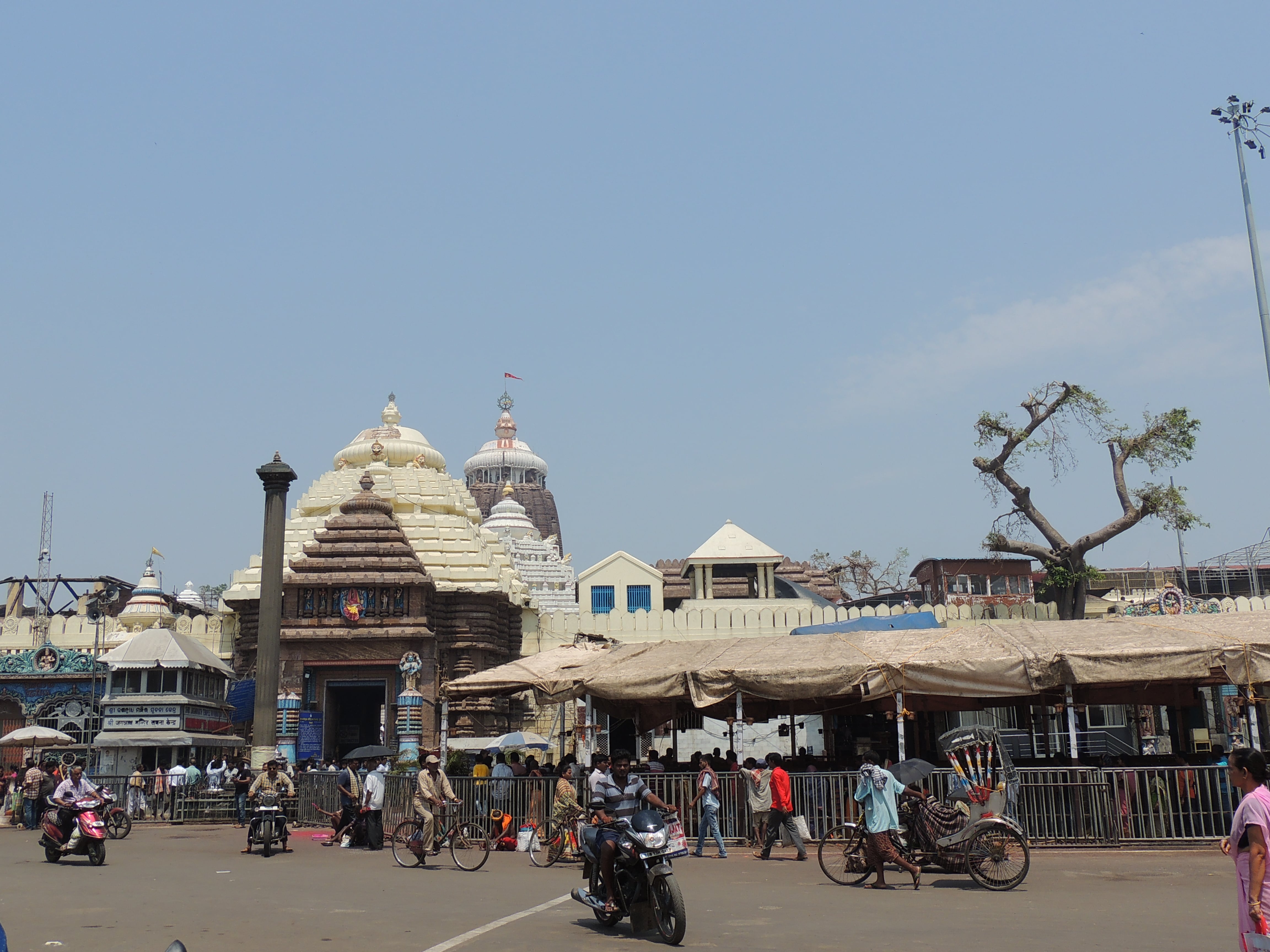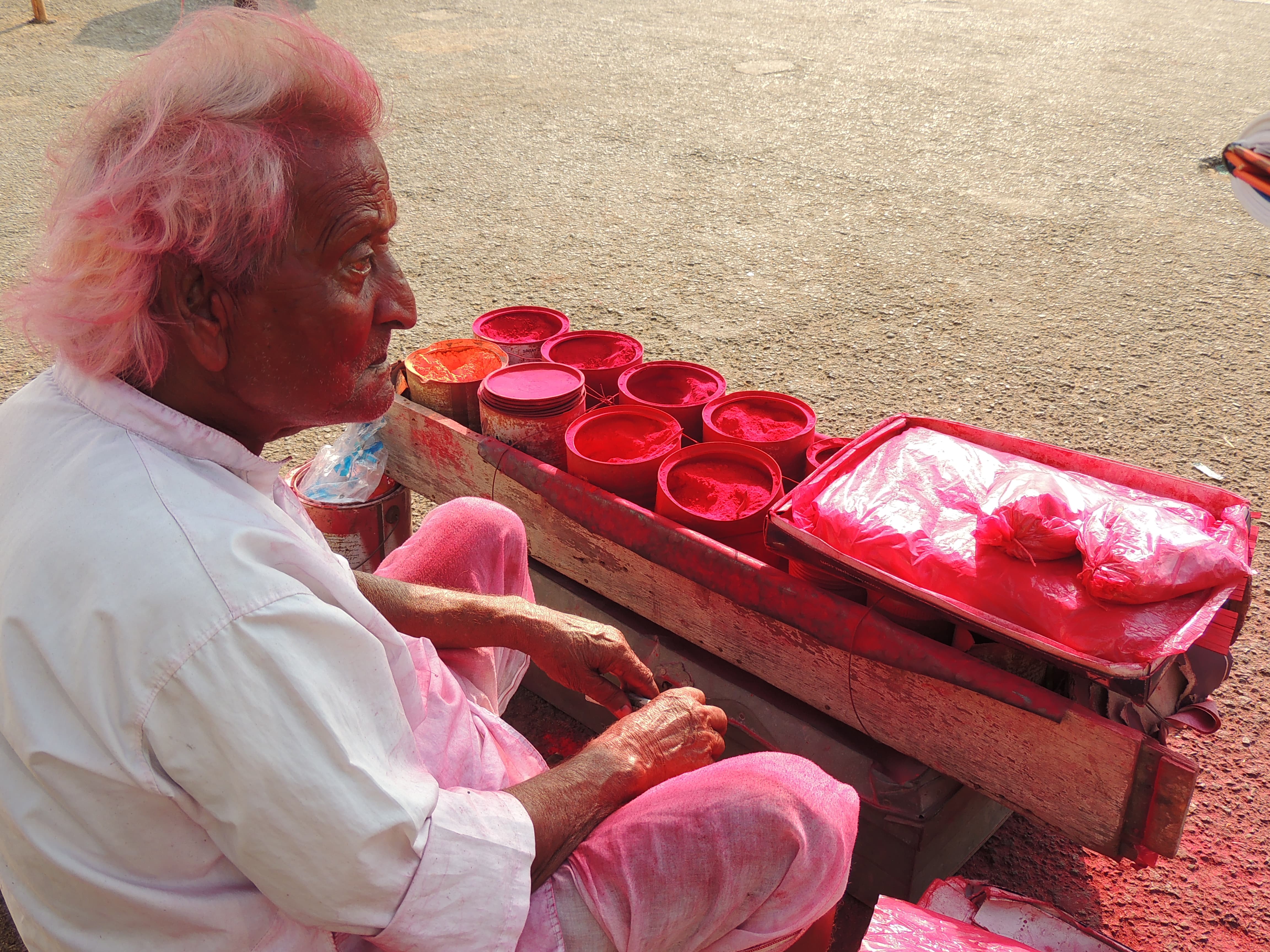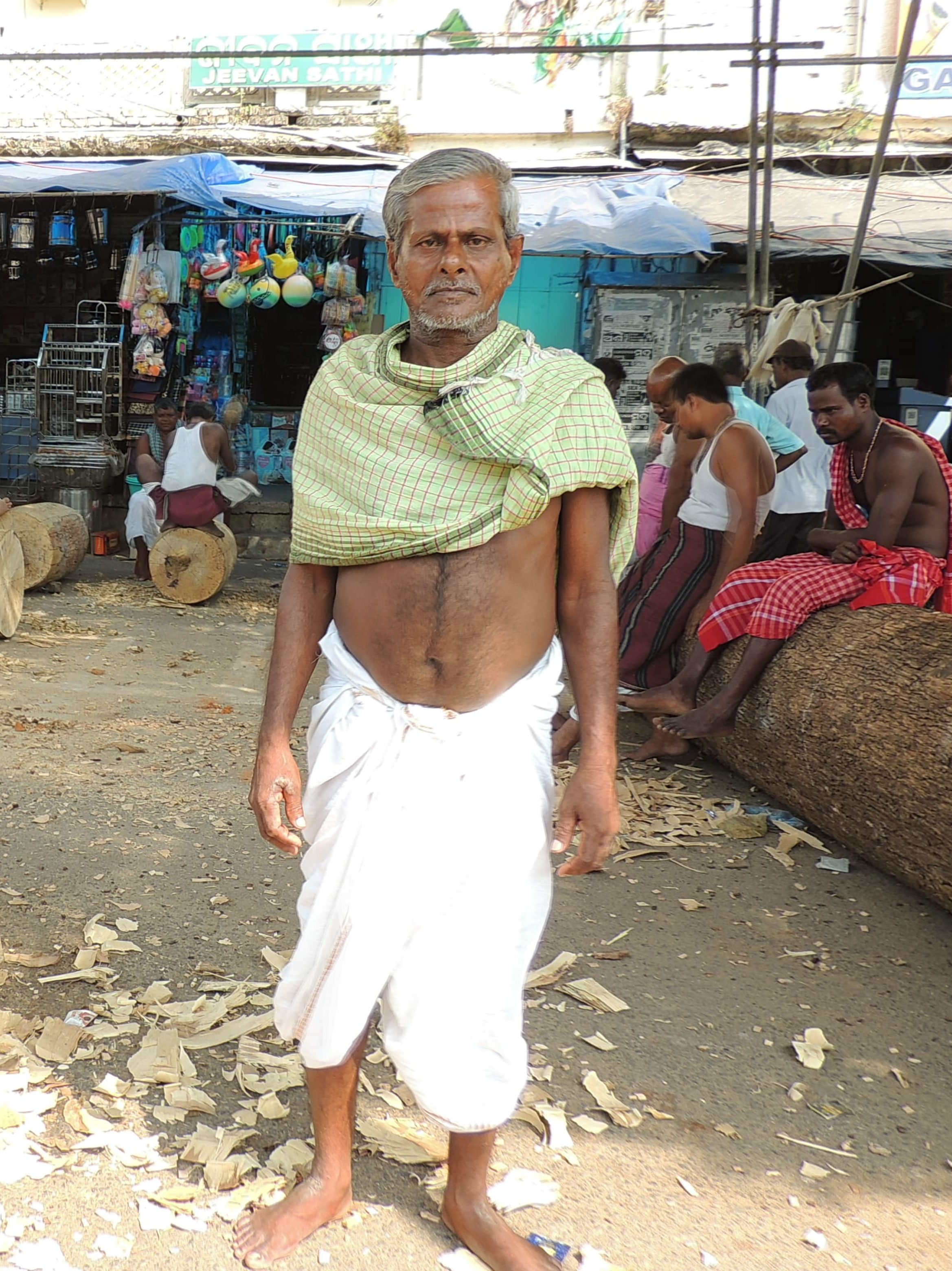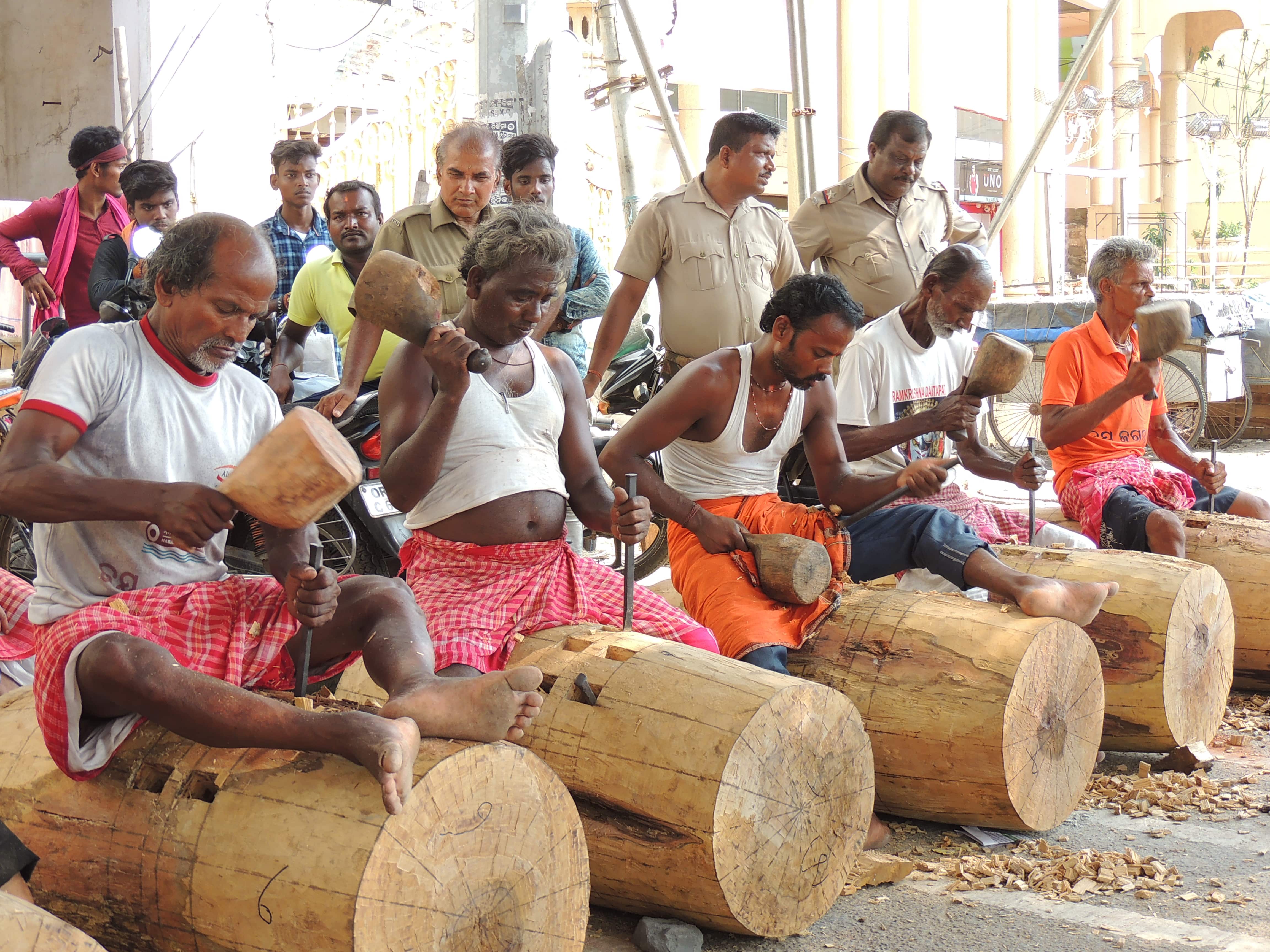
Tourism takes a hit post Fani, but Puri remains indefatigable

Ramachandra Prusty, who has seen eighty summers, can barely see or hear. But he sits patiently with his bags of ‘sindura’ (vermillion) on the Grand Road of Puri Town, waiting for prospective buyers. Selling vermillion at the same spot near the Jagannath Temple for 60 years now, he is probably among the few vendors, who came to work the day after their hometown was ravaged by Cyclone Fani.
Ask him how he survived the cyclone, pat comes the reply, “Which one?” It is not a surprise that Prusty has survived many. The strain of resilience in him reflects the indomitable spirit of the town that despite being battered and left with a paralysed economy, is trying to get back on its feet, especially when the countdown has begun for the Ratha Jatra festival slated for July 4.

Badly hit, but alive
Puri has been stripped of its greenery, and hotels on the beach have been disfigured beyond recognition, so much so that curious tourists from other districts now visit it to watch the ruins. The before and after pictures of the town are striking, mostly because the government had undertaken a massive beautification drive to attract tourists ahead of the Nabakalebar festival (when idols of the trinity in the Puri temple are replaced by new ones) in 2015. Businesses of hundreds of restaurants, handicraft and handloom shops, vendors, street entertainers and fast food shops – all dependent on tourism – have taken a backseat.
“Six of my brand-new tourist vehicles, including three 15-seater tempos and two SUVs, have been damaged in the cyclone. I am still paying their instalments and their repair cost will not be less than ₹1.5 lakh,” says Satyanarayan Mishra, who runs a travel agency. He hopes the finance companies make a relaxation on the payment of interest so that he can stabilize his business.
Traders say, apart from the winter holidays, the city witnesses a huge inflow of tourists in the months running up to the Ratha Jatra. Several handloom stores on the beach now display whatever is left of their merchandise in their half-broken kiosks, while those located on the Grand Road wait for the tourist flow to gather.
Ranjan Kumar Patra, the owner of a handloom store on Grand Road calls traders like him the indirect victims of the cyclone, with hotels on the sea front being the direct victims. “My daily sale has shrunk from an average of ₹1.5 lakh to ₹500. If the tourism infrastructure is not taken care of soon, especially hotels, it will just be a matter of time before we run out of our savings and start losing workers,” he says.
Even though power was restored on the Grand Road on May 15, its absence so far had kept hotels, dharmashalas and lodgings from entertaining guests. It will take another month or so for sea-facing hotels to rebuild their structures and get them ready for the Ratha Jatra crowd.
Dharmashalas — budget-friendly lodgings for groups of tourists from different corners of the country, too, wear a deserted look.
“Tourists who come from Bombay, Madras, Delhi and Haryana on a shoestring budget stay here. We also rent out our space for marriages and ‘bhagavat’ recitations. Of the 40 rooms of our dharmashala, at least half are occupied at any time. But there is not a soul now. The storm has broken our bhagavat shed. We expect things will be better by Ratha Jatra,” says Lakshmiraj Joshi, caretaker of Doodwawala Dharamshala, one of the oldest dharmashalas on the Grand Road.
Despite the hiccups, shopkeepers, restaurateurs and traders have chosen to stay optimistic ahead of the yearly festival of Ratha Jatra.
Seva is foremost, disaster or not
The personal loss of property has not deterred thousands of servitors of the Jagannath temple from resuming the daily rituals of the deities or running around and preparing for the annual sojourn of Lord Jagannath.
Take for instance the case of Nrusingha Mohapatra, the ‘mukhya maharana’ (chief architect) of Taladwaja Rath, the chariot of Lord Balabhadra. A major part of his thatched house in the town was demolished by the cyclone, but 70-year-old Mohapatra had unfailingly appeared at the chariot shed four days later.

He tells us a story that inspires this strong sense of duty. “When I graduated from the State Handicraft and Training Centre in 1973, my father, then the chief architect of the Taladwaja chariot, asked me to choose between a career as a sculptor and being in the ‘seva’ of the lords. I chose the latter. We have pledged ourselves to the lords. Even if someone dies, we have to come to work,” says Mohapatra who has been building chariots for Ratha Jatra since he was 11 years old.
Mohapatra is one of the 10 distinguished artisans who carved out the current figurines of Jagannath, Balabhadra, Subhadra and Sudarshan during the Nabakalebar festival in 2015. But many wood craftsmen like him, who get an allowance of ₹500 for food, during the two-month-long preparation time of Ratha Jatra, often don’t have a fixed livelihood. “The temple administration pays us ₹4,400 every year for the work of 22 festivals. The rest of the income is dependent on wood work or stone idol carving, which is barely enough to make ends meet,” he says.
Other temple servitors say the cyclone has damaged parts of the temple, more the livelihood of those who eke out a living from tourism.
“On a normal day at least 36 families of servitors are involved in the daily rituals of the Jagannath Temple alone. There are several other temples in the campus. There are more than 350 categories of servitors in the temple. The clans include Pujari, Pujapanda, Singhari, Daitapati, Pratihari, Mekap and many others. There are even designated ‘sevayats’ who guard the kitchen doors. These people are not paid salaries. They earn at least ₹500-₹700 by showing visitors around the temple. But the footfall has drastically gone down in the wake of the cyclone,” says Lokanath Daitapati, the section of servitors who play a prominent role during Ratha Jatra festival.

The ‘suars’ (temple cooks who cook and sell ‘mahaprasad’ at the Anand Bazar) assert they have borne the maximum brunt of the cyclone. “If we used to cook 50 quintals of rice every day, it has come down to two or three,” says Damodar Mahasuar, the president of Suar Mahasuar Committee of the temple.
Mahasuar says almost 1,000 families of the suar servitors have been affected. “Each does a minimum business of ₹20,000 to ₹30,000 per day. But it is getting difficult to earn a decent income now. It is the ‘suars’ who help the ‘daitas’ carry the lords to the chariots during Ratha Jatra. Despite facing personal losses, every servitor has been tirelessly working since the day of the cyclone. What hurts more is that the temple administration has turned a blind eye on us. If the administration doesn’t look after our basic needs in this time of crisis, our lack of strength may affect the chariot festival this year,” Mahasuar says.
Sudarshan Mekap, senior caretaker of the Sri Mandir temple office, however, is positive that there will be no hurdles in the conduct of Ratha Jatra this year.
“Not that we have faced losses. The kitchen of Gundicha Temple (the destination of the Ratha Jatra where the trinity is worshipped during the 14-day sojourn) and the office houses there have been demolished. An entire grove having trees more than 200 years old has been destroyed. The total loss amounts to at least ₹5.10 crore,” says Mekap, who is in charge of the conduct of festivals of the Jagannath Temple.
“Many artisans including ‘maharanas’ (carpenters), ‘bhois’ (who carry the wood), blacksmiths, ‘rupakaras’ (engravers of figurines), ‘chitrakaras’ (painters) and ‘darjis’ (tailors) involved in Ratha work have been affected by the cyclone. But they have turned up for work as per schedule. The festival witnessed a crowd of almost 14 lakh last year. It may thin down to 8-9 lakh this year, but Ratha work would not be affected mostly because of the strong sense of duty towards the festival among the various clans of workers involved in it.”
₹1,000-crore loss
The state tourism department has revved up steps to rebuild the tourism sector in the town on war footing, ahead of the Ratha Jatra.
Bijay Kumar Jena, assistant director of the Puri tourism department says the tourism industry in Puri has incurred an estimated loss of nearly ₹1,000 crore. The maximum brunt has been borne by hotels and restaurants.
“The 1,200-odd hotels, lodges and dharmashalas in the city have been severely hit by the cyclone and the low flow of tourists in its aftermath. According to our survey, the occupancy rate of 525 hotels (not including lodges or dharmashalas) in the town was 75 per cent during May last year. It rose to 79 per cent during Ratha Jatra in June. But the same is almost nil this year,” he says.
He says the tourism department has not come up with a compensation plan for hoteliers and traders yet, but may plan to provide them relief from tax and bank instalments in view of the losses faced by them. The department, at a recently held meeting with hotel owners’ association, asked them to list out required relief measures. A decision in this regard will be taken by a state-level monitoring committee. “Before the end of May, we plan to recover maximum ground as possible. Even if there is a 10 per cent recovery in the tourism sector, we can take it forward by circulating the news of ‘We are ready’ on social media or holding road shows to woo back tourists,” Jena adds.
Indeed, no ebb is permanent for the tide has to turn.

